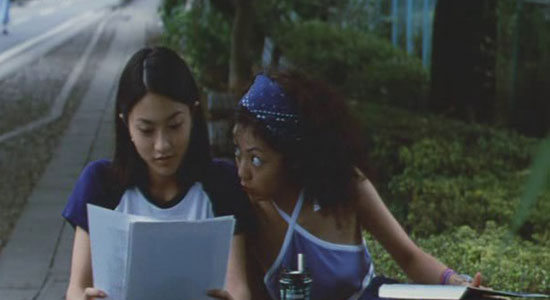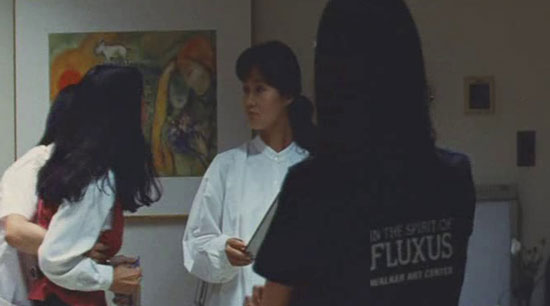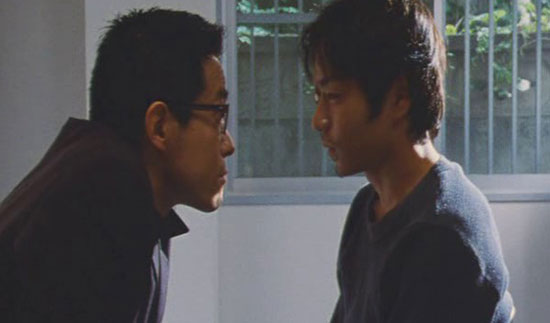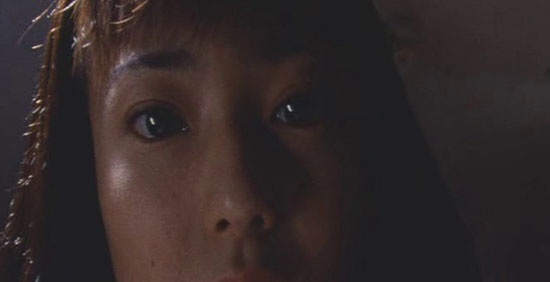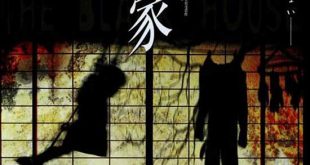SYNOPSIS:
REVIEW:
You never forget the first time you encounter Junji Ito. Some of you may have stumbled across the image of a shark with spindly nightmare legs somewhere on the internet, there is so much more to discover should you venture to look into the mind behind it. Ito has written a rather eclectic body of work–including a manga chronicling the daily adventures of his cats–but he’s known primarily for his surreal contributions to horror. Ito is a master at bringing peoples’ worst anxieties to screaming life, often in a form beyond imagination and quite frequently for no logical reason. The aforementioned spider-shark is from the series Gyo, where sea creatures sprout legs due to nuclear waste and run amok on land. I was particularly moved by Uzumaki, where a town’s fixation with spirals escalates to beauty marks twisting into black holes and teenage boys mutating into giant snails. But his first big hit was Tomie, the simple story of a teenage girl who can manipulate the minds of any man she meets and regenerate her body no matter how brutally she is killed—both of which happen a lot.
The true nature of her powers and her ultimate motivations are foggy, but what is clear is that she is an unstoppable force of cloning demon sex magic. Tomie is a gruesome twist on the succubus myth and her saga pushes that concept to its unfathomable extreme, but the stories in her canon seem to hinge on a very specific, more everyday anxiety: the fear of a beautiful girl.
Tomie is an unfeeling feminine bombshell of sexual terror; a mean girl that would send Regina George running home in tears; a shark in a schoolgirl skirt. She is the worst nightmare of every unpopular soul hoping to be her friend, every admirer aiming to catch her eye, every girlfriend second-guessing the loyalty of her beloved. She embodies the distress any one of us feel when confronted with someone exceptionally beautiful—that jolt of fight-or-flight jitters that could be mistaken for love at first sight but somehow feels a lot like panic, like we’re suddenly in the presence of something that could devour us whole.
The Tomie film series spans nine movies in nearly as many years, some coming out back to back within months of each other. As far as I can tell, none of them draw faithfully from the source material, instead taking elements of the Tomie mythos and creating new stories. That’s fine, since by its very nature, the series is open to various stories from shifting points of view, thanks to Tomie’s regenerative ability. After all, the manga spanned two unrelated arcs plus a collection of short stories, all involving different Tomies devastating new lives every episode. But given the wealth of bizarre stories they could have pulled from, it’s just strange that they chose to go with…this.
In the premiere film adaptation of a series where tumors have faces and teenage horniness leads to dismemberment, we get a noir murder mystery complete with an offscreen trauma that results in convenient amnesia, a chain-smoking detective who has been hot on the case for years, and a moody hypnotherapist who knows too much caught in the middle.
Tsukiko is a photography student who is seeing a psychiatrist for her nightmares. She suffered an unspecified accident years ago that she cannot remember, but she is haunted by flashes of a headless body that she is sure has something to do with the incident. During one of their hypnotherapy sessions, she utters a name: “Tomie.” Meanwhile, the solitary new tenant living downstairs from her is spoon-feeding a mewling mass of hair in a box, which steadily grows into a little girl, then a young woman over a few weeks, her hair a long unchanging sheet of pure black. Meanwhile-meanwhile, a detective investigating a string of suicides following the murder of a high school girl approaches the psychiatrist, asking if Tsukiko ever mentioned knowing a girl named Tomie Kawakami. The detective reveals to the doctor that he has discovered a number of murder victims named Tomie Kawakami spanning centuries, and he believes that they are all the same person.
Meanwhile-meanwhile-meanwhile, Tsukiko’s jerkoff boyfriend is fooling around with her friend in between sessions of verbal abuse, but Tsukiko either doesn’t notice or doesn’t care that he is perpetually annoyed by her existence. When his restaurant job takes on a new employee—a girl with long black hair—he and every other guy in the place are quickly swept up in a lustful frenzy (implied, anyway—we sadly only get to see the aftermath of what was surely a ridiculous scene of three stoner kitchen workers jabbing at each other with butcher knives over the affections of the new hostess). The girl reveals to him that she was best friends with Tsukiko in high school until something unforgiveable transpired between them, and she enlists the boyfriend in tracking down her target. This all comes to a head with Tsukiko waking up strapped to a hospital bed, her boyfriend a mindless succubus-drone and her doctor’s throat slit, and her old friend Tomie sitting at her bedside, smiling.
I want to take a second and gush about my girl Tomie, because she is the reason we’re all here and she is far and away the best part of the movie. Until this point, every shot of her has been from behind, her only distinctive feature being her hair (that, and the men she leaves weeping in her wake). Finally, alone with Tsukiko we get to see her face, and man…it was worth the wait. For all this movie’s time spent dragging its feet through the boggy muck of smoky detective noir, the price of admission lies in our titular character. Miho Kanno’s remarkably expressive eyes make her innocent one moment and terrifying the next, all the while seemingly haunted by something unknowable. She has mastered Tomie’s iconic smile, a wolfish grin that is just a twitch away from being inhuman.
It should be said that to summarize an Ito story is to suck away a great deal of its power. Surreal horror is best experienced by doing just that: experiencing it, taking your own trip down the rabbit hole. Much like any good arthouse film—or any good art, period—it’s entirely sensory, lending a more abstract logic to its universe. All that aside, since this is merely inspired by other Ito stories (the incidents referred to in flashback throughout the film are events from the first arc of the manga), we can judge it on its own dumb merits.
There is a nagging sense throughout the film that there was a whole other movie we missed before the opening credits. That’s because despite being the first installment in the Tomie film series, this movie appears to take place years after the events of the original run of the manga. The film also assumes too much of its audience. It carries itself as if the viewer is already familiar with the original material, as so much of the lore is hinted at more than properly explained. Yet it tries to grab that general audience by shrouding a pulpy horror story in a tight-lipped thriller structure that keeps most of the gore safely offscreen. The result is a bit of a mess that is a disservice to fans of the series and would likely be incomprehensible for someone walking in cold.
The final verdict is that Tomie is a fascinating story that has maintained its cult following for a reason, but this film is a disappointment given what could have been. Thankfully, the installments that followed aimed to rectify the dullness of the first, escalating the surrealism and insanity and really taking the series to the heights it deserves to reach. The Tomie opus as a whole is definitely worth the investment, but you can probably skip this stuffy adaptation of a batshit story.
 Horror News | HNN Official Site | Horror Movies,Trailers, Reviews
Horror News | HNN Official Site | Horror Movies,Trailers, Reviews



